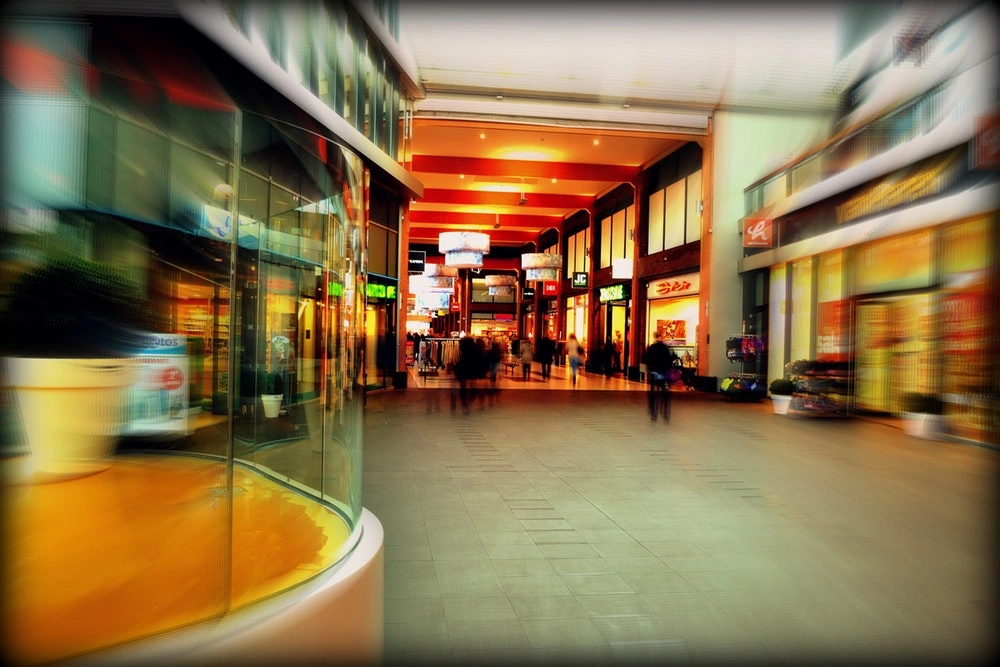Why Do Shopping Malls and Stores Need Heatmaps?
Shopping centres and store owners frequently struggle to realise what areas are the most attended by their customers. What is their usual path around the building? What aisles are visited most frequently? Knowing where your customers are and how they get there allows you to increase your marketing possibilities, driving your sales in return. The solution to this are heatmaps, which allow you to create a visualization of your visitor’s movements based on their network-compatible devices.

What are the benefits of knowing where your customers are?
53% of customers are willing to share their location in order to receive more relevant advertisement (Forbes). This shows that people are eager to tell you where they are, as long as they benefit from it.
Analyzing your customer’s pathways will allow you to determine what stores are the most popular, where people spend the most time and where to situate your products in order to make them easily accessible for them.
Learning what areas are the most occupied allows you to delegate additional staff to them in order to provide better experience for your visitors, thus increasing the chance of them making a purchase.
Movement heatmaps also make it possible to locate the best places for trading posts and advertisements in a shopping centre. This allows you to choose a location which will attract the attention of the largest number of visitors, increasing footfall and thus helping to increase sales.
Heatmaps have appeared on the market a while ago. They use various technologies, such as WiFi or mobile apps combined with beacons.
Beacons and WiFi – two ways to analyze location
Beacons are tools that utilize the Bluetooth Low Energy (BLE) in order to send or receive information from mobile devices. This way you can contact to your customers whenever they enter a particular department or even aisle in your store.
The solution is present in form of small coin cell powered appliance, doesn’t cost much and consumes very small amounts of energy, but requires a compatible mobile app for location services. At least a few beacons need to work together in order to be used for this purpose. This technique is characterised by higher accuracy than the WiFi alternative.
Another option is to utilize a WiFi network. There are a couple of ways in which it might be used for location detection.
The first one is to use a pre-existing WiFi infrastructure in connection with a mobile app on the user’s device in order to acquire his position in similar fashion to beacons.
Another one requires specifically designed routers which are capable of receiving and analyzing the signal from WiFi equipped appliances. Unlike all the other solutions, this one does not need an application to be installed on user’s smartphone.
Regardless of the option you choose, this technology might incur additional charges. If the shop’s or centre’s owner does not have a sufficient number of devices, or the routers are not equipped in proper signal analysis mechanisms, it will be necessary to spend additional means on infrastructure. Both solutions are also less accurate than beacons, having error margin of a few metres.
However, this option can be nicely complemented by promoting the presence of your network. It creates additional value for your visitors and further boosts your sales – those customers who use digital devices while in a store convert at 20% higher rates compared to those who don’t (Deloitte), and making your WiFi available for free is a greatly incentivises them to go online.
Additionally, you can use a service such as Social WiFi in order to communicate with your customers by sending them coupons, information about latest promotions or products and allowing them to voice their opinions about your store, as well as allowing you to contact them even after they leave the venue.
The importance of heatmaps and other location-based services grows along with the growing number of mobile users in shopping centers and stores. It becomes more and more necessary as smartphones start to account for a bulk of internet traffic, and customers become increasingly demanding regarding free and unlimited network access.
Get started today & see what your marketing strategy has been missing
- 14 days free
- Easy setup
- Cancel anytime